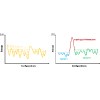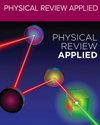Exploring the topological sector optimization on quantum computers
IF 4.4
2区 物理与天体物理
Q2 PHYSICS, APPLIED
引用次数: 0
Abstract
Optimization problems are the core challenge in many fields of science and engineering, yet general and effective methods for finding optimal solutions remain scarce. Quantum computing has been envisioned to help solve such problems, with methods like quantum annealing (QA), grounded in adiabatic evolution, being extensively explored and successfully implemented on quantum simulators such as D-Wave’s annealers and some Rydberg arrays. In this work, we investigate the topological sector optimization (TSO) problem, which has attracted particular interest in the quantum simulation and many-body physics community. We reveal that the topology induced by frustration in the optimization model is an intrinsic obstruction for QA and other traditional methods to approach the ground state. We demonstrate that the difficulties of the TSO problem are not restricted to the gaplessness, but are also due to the topological nature, which was often ignored for the analysis of optimization problems before. To solve TSO problems, we utilize quantum imaginary-time evolution (QITE) with a possible realization on quantum computers, which leverages the property of quantum superposition to explore the full Hilbert space and can thus address optimization problems of topological nature. We report the performance of different quantum optimization algorithms on TSO problems and demonstrate that their capabilities to address optimization problems are distinct even when considering the quantum computational resources required for practical QITE implementations.

探索量子计算机上的拓扑扇区优化
优化问题是许多科学和工程领域面临的核心挑战,但寻找最佳解决方案的通用有效方法仍然匮乏。量子计算被认为有助于解决此类问题,以绝热演化为基础的量子退火(QA)等方法已被广泛探索,并在量子模拟器(如 D-Wave 的退火器和一些 Rydberg 阵列)上成功实施。在这项工作中,我们研究了拓扑扇区优化(TSO)问题,该问题引起了量子模拟和多体物理学界的特别关注。我们揭示了优化模型中挫折诱导的拓扑结构是 QA 和其他传统方法接近基态的内在障碍。我们证明了 TSO 问题的难点不仅限于无间隙性,还在于拓扑性质,而这在以前的优化问题分析中常常被忽视。为了解决 TSO 问题,我们利用了量子虚时演化(QITE),它有可能在量子计算机上实现,利用量子叠加特性探索整个希尔伯特空间,从而解决拓扑性质的优化问题。我们报告了不同量子优化算法在 TSO 问题上的表现,并证明即使考虑到实际 QITE 实现所需的量子计算资源,它们解决优化问题的能力也是截然不同的。
本文章由计算机程序翻译,如有差异,请以英文原文为准。
求助全文
约1分钟内获得全文
求助全文
来源期刊

Physical Review Applied
PHYSICS, APPLIED-
CiteScore
7.80
自引率
8.70%
发文量
760
审稿时长
2.5 months
期刊介绍:
Physical Review Applied (PRApplied) publishes high-quality papers that bridge the gap between engineering and physics, and between current and future technologies. PRApplied welcomes papers from both the engineering and physics communities, in academia and industry.
PRApplied focuses on topics including:
Biophysics, bioelectronics, and biomedical engineering,
Device physics,
Electronics,
Technology to harvest, store, and transmit energy, focusing on renewable energy technologies,
Geophysics and space science,
Industrial physics,
Magnetism and spintronics,
Metamaterials,
Microfluidics,
Nonlinear dynamics and pattern formation in natural or manufactured systems,
Nanoscience and nanotechnology,
Optics, optoelectronics, photonics, and photonic devices,
Quantum information processing, both algorithms and hardware,
Soft matter physics, including granular and complex fluids and active matter.
 求助内容:
求助内容: 应助结果提醒方式:
应助结果提醒方式:


